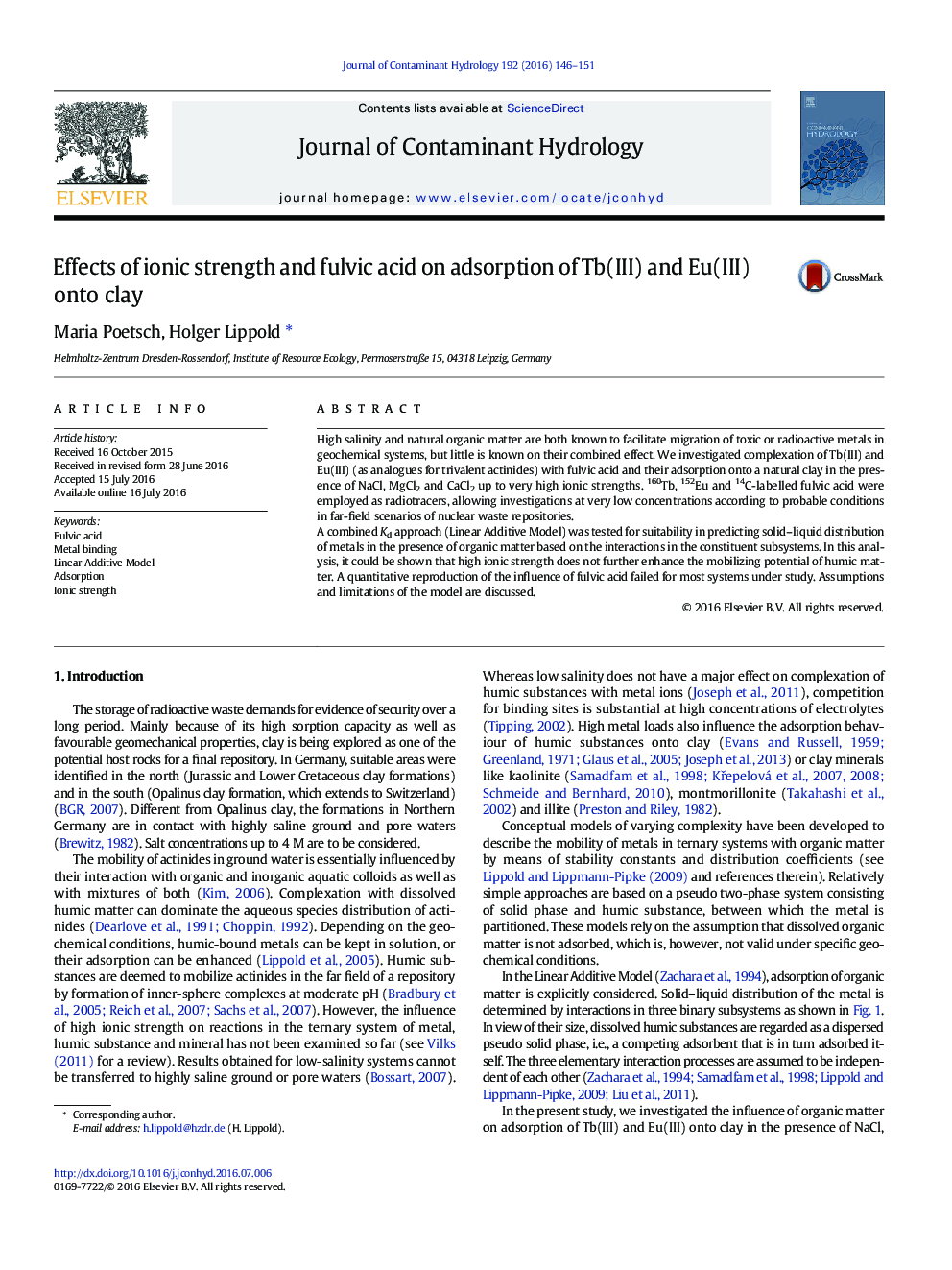| Article ID | Journal | Published Year | Pages | File Type |
|---|---|---|---|---|
| 6386352 | Journal of Contaminant Hydrology | 2016 | 6 Pages |
â¢Salinity cannot enhance humic-bound metal transport.â¢Adsorption of humic matter onto clay is nearly independent of ionic strength.â¢Solid-liquid distribution of metals does not follow the Linear Additive Model.
High salinity and natural organic matter are both known to facilitate migration of toxic or radioactive metals in geochemical systems, but little is known on their combined effect. We investigated complexation of Tb(III) and Eu(III) (as analogues for trivalent actinides) with fulvic acid and their adsorption onto a natural clay in the presence of NaCl, MgCl2 and CaCl2 up to very high ionic strengths. 160Tb, 152Eu and 14C-labelled fulvic acid were employed as radiotracers, allowing investigations at very low concentrations according to probable conditions in far-field scenarios of nuclear waste repositories.A combined Kd approach (Linear Additive Model) was tested for suitability in predicting solid-liquid distribution of metals in the presence of organic matter based on the interactions in the constituent subsystems. In this analysis, it could be shown that high ionic strength does not further enhance the mobilizing potential of humic matter. A quantitative reproduction of the influence of fulvic acid failed for most systems under study. Assumptions and limitations of the model are discussed.
